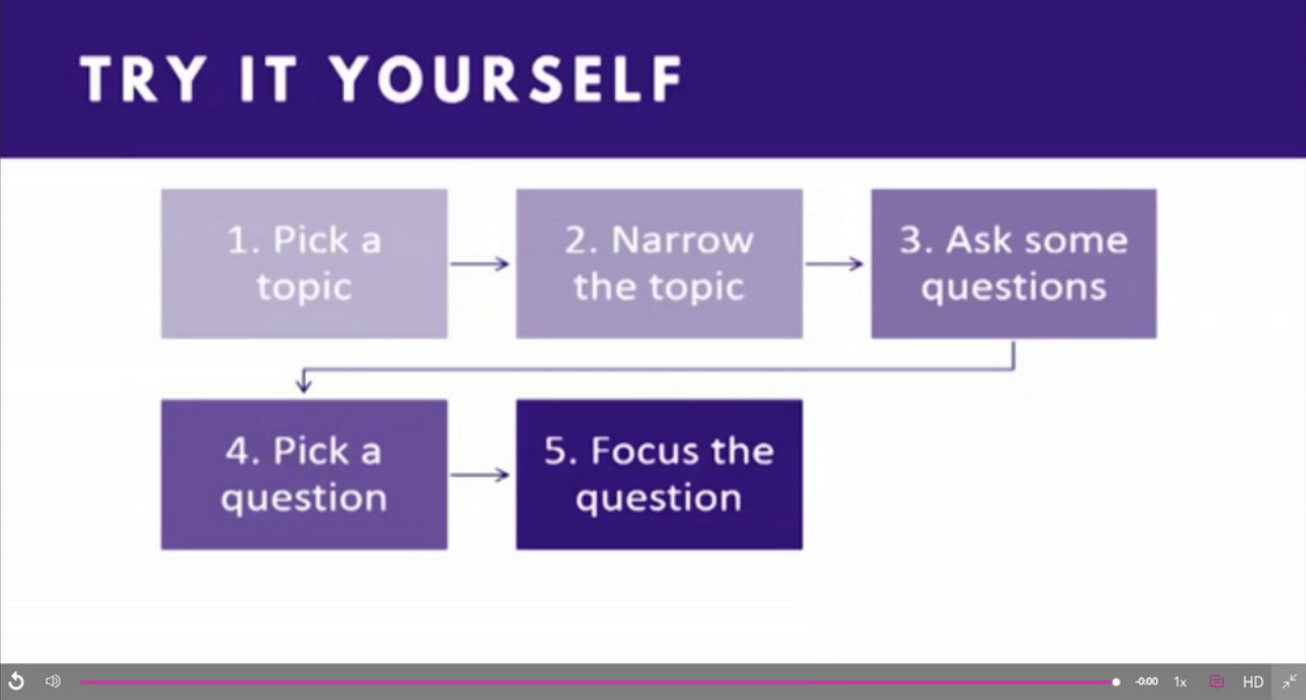
Ask yourself some questions. Narrow the topic.
Then go out and ask your respondents. One or two will do to start with. Take the view that you may interview two or 50. Sit them down. Record it. Ask questions and keep asking as long as they are willing to respond. Some of the greatest insight will come when they think it is over; something will come to them. A throw away thought, recollection or metaphor will put a smile on your face. THAT is what this research is about. And if you are their tutor/teacher too, that is fine. Don't let it get in the way. It shouldn't. Afterall, don't you listen actively to feedback from your students in any case?
And to justify my approach I can provide a list of papers and quotes:
In action research, the educator is both researcher and teacher (Kuhn & Quigley, 1997).
And try different approaches, say 'informed observation' - The Human Lab at the Institute of Education at the Open University have made a business of this. You put learners into a space designed to look like an office, or home, even a student's bedroom. Then you give them a device and ask them to fulfil various research and study tasks. By watching closely what they do, and recording it, you get an insight that might otherwise be impossible, on how people use the technology.
We don't follow our guinea-pigs into bed or the bathroom though. Yet, these are places where people 'work' too.
'Ethnographic fieldwork' makes up part of this research process too. All this requires is that while teaching you make notes that go beyond the teaching framework in order to understand the context of what the students are doing.
Victor Lally calls it a 'participatory and iterative approach'. (Lally et al. 2012 : 02) Something he undertook to understand how students interacted in the virtual world Second Life.
‘Different methodologies can be taken to embody different views of the nature of meaning’. (Snyder, 1995)
Indeed according to Patton (1982), a framework should be created whereby "respondents can express their understandings in their own terms".
A wide literature review is necessary.
Not only does it give credibility, but it also finds out what has been done by whom already. If research such as this has been done before and elsewhere, in all likelihood it has, let's see it.
"It should be extensively and systematically woven into the paper to provide background and balance and even trying hard to offer contrasting perspectives so setting out clearly the pros and cons of the methodology and past experiences with these techniques in this kind of setting." (I believe I am quoting myself from 2013).
This is worth looking into:
Oxford Research: Department of Education
Digital youth and learning
This area examines how young people are using new technologies in their everyday lives and the potential learning that occurs as a result of this use. Work in this area includes the Learner and their Context study – a 3-year study that explores how and why young people learn outside formal educational settings using technology. Previous projects include the ESRC seminar series The educational and social impact of new technologies on young people in Britain that was jointly run by the Department of Education and LSE.
From > Sage Publishing
Research Methods in Education
REFERENCE
Kuhn, G., & Quigley, A. (1997). Understanding and using action research in practice settings. In A. Quigley & G. Kuhne (Eds.), Creating practical knowledge through action research (pp. 23–40). San Francisco: Jossey-Bass. Looi, C.-K., Chen, W. the 9th International Conference of the Learning Sciences (Vol. 2). International Society of the Learning Sciences.
Lally, V; Sharples, M; Tracey, F; Bertram, N and Masters, S. (2012). Researching the ethical dimensions of mobile, ubiquitous,and immersive technology enhanced learning (MUITEL) in informal settings: a thematic review and dialogue. Interactive Learning Environments, 20(3), pp. 217–238.
Patton, M.Q. 1983, (p. 205). Qualitative Evaluation Methods
Snyder, I. (1995) Multiple perspectives in literacy research: Integrating the quantitative and qualitative. Language and Education 9 (1).Wiggins, B J (2011) 'Confronting the dilemma of mixed methods', Journal Of Theoretical And Philosophical Psychology, 31, 1, pp. 44-60, PsycARTICLES, EBSCOhost, viewed 13 February 2013.




